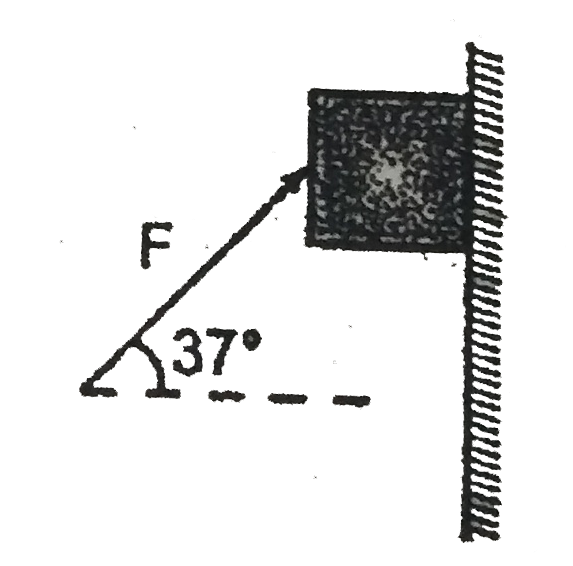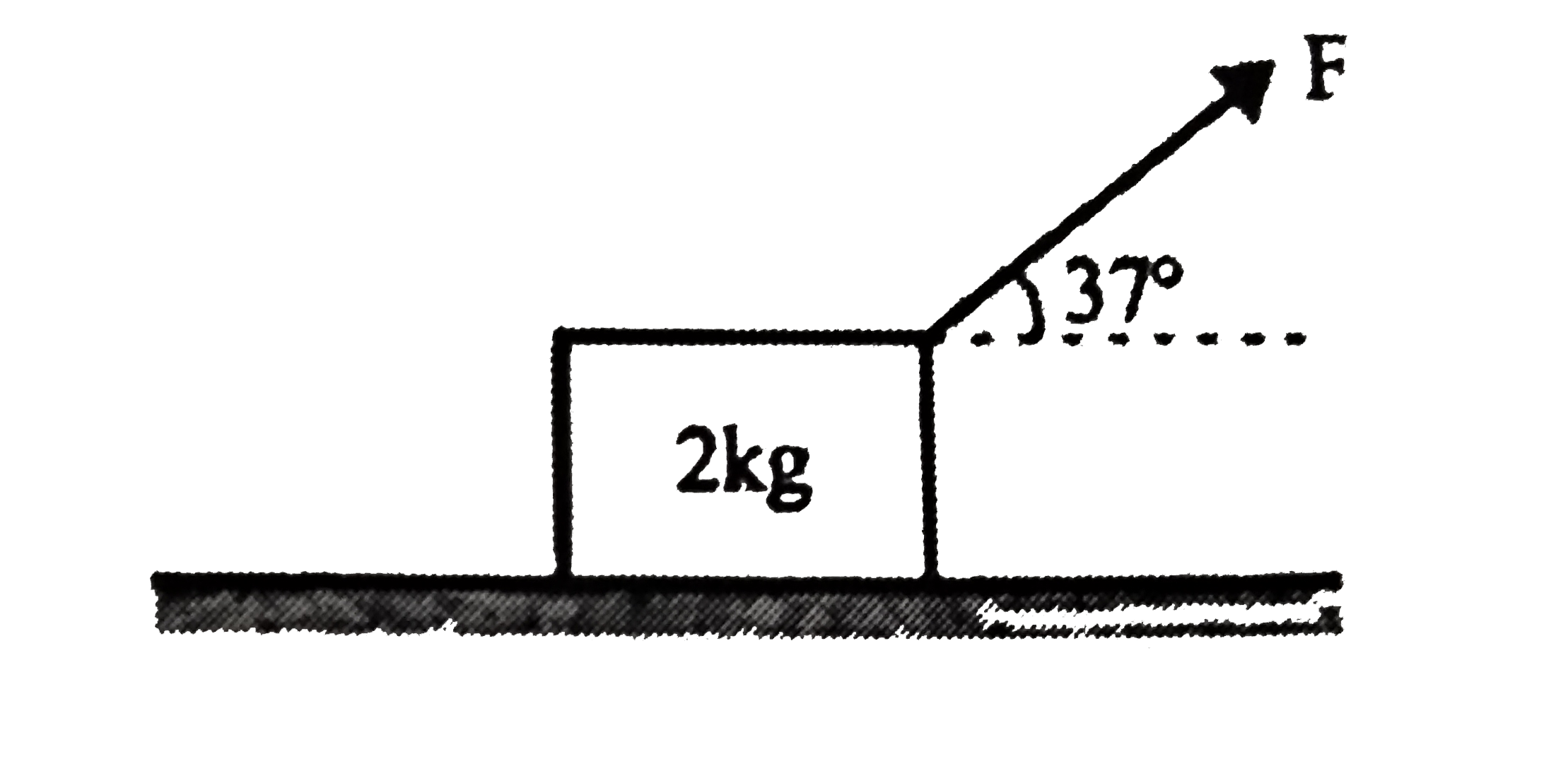An eraser weighing 2N is pressed against the black board with a force of 5N. The coefficient of friction is 0.4. How much force parallel to the black board is required to slide the eraser upwards
2N
2.8N
4N
4.8N
The correct Answer is:C
To solve the problem of how much force parallel to the blackboard is required to slide the eraser upwards, we can follow these steps:
Step 1: Identify the forces acting on the eraser
- The weight of the eraser (W) is given as 2 N, acting downwards.
- The force pressing the eraser against the blackboard (N) is given as 5 N, acting perpendicular to the surface of the blackboard.
Step 2: Calculate the normal force
The normal force (N) is the total force pressing the eraser against the blackboard. In this case, it is given as 5 N.
Step 3: Calculate the frictional force
The frictional force (f) can be calculated using the formula:
f=μ⋅N
where:
- μ is the coefficient of friction (0.4)
- N is the normal force (5 N)
Substituting the values:
f=0.4⋅5
f=2N
Step 4: Determine the total force required to slide the eraser upwards
To slide the eraser upwards, the applied force (F) must overcome both the weight of the eraser and the frictional force. Therefore, the total force required is:
F=f+W
where:
- f is the frictional force (2 N)
- W is the weight of the eraser (2 N)
Substituting the values:
F=2N+2N
F=4N
Conclusion
The force required to slide the eraser upwards is 4 N.
---
- The weight of the eraser (W) is given as 2 N, acting downwards.
- The force pressing the eraser against the blackboard (N) is given as 5 N, acting perpendicular to the surface of the blackboard.
The normal force (N) is the total force pressing the eraser against the blackboard. In this case, it is given as 5 N.
The frictional force (f) can be calculated using the formula:
f=μ⋅N
where:
- μ is the coefficient of friction (0.4)
- N is the normal force (5 N)
f=0.4⋅5
f=2N
To slide the eraser upwards, the applied force (F) must overcome both the weight of the eraser and the frictional force. Therefore, the total force required is:
F=f+W
where:
- f is the frictional force (2 N)
- W is the weight of the eraser (2 N)
F=2N+2N
F=4N
The force required to slide the eraser upwards is 4 N.
Topper's Solved these Questions
- BOOK - NARAYNACHAPTER - CIRCULAR MOTIONEXERCISE - LEVEL II(H.W)51videos
CIRCULAR MOTION
- BOOK - NARAYNACHAPTER - CIRCULAR MOTIONEXERCISE - IIT QUES.4videos
CIRCULAR MOTION
- BOOK - NARAYNACHAPTER - CALORIMETRYEXERCISE - Level- II (H.W)11videos
CALORIMETRY
- BOOK - NARAYNACHAPTER - COLLISIONEXERCISE - Level-II (H.W)54videos
COLLISION
Similar Questions
A block weighing 5 kg is pressed against a verticalk wall by a normal force of 150 N the coefficient of friction along being 0.5 . Find the force required to cause the block to move (a) horizontally, (b) vertically upward, (c) vertically downwards.
View SolutionA block of mass 2 kg is pushed against a rough vertical wall with a force os 40 N. Coefficient of static friction being 05. Another horizontal force is 15 N, is applied on the block in a direction paralle to the wall. Will the block move? If yes in which direction? If no, find the frictional force exerted by the wall on the block.
View Solution
Knowledge Check
- Question 1 - Select One
A duster weighs 0.5N. It is pressed against vertical board with a horizontal force of 11N. If the co-efficient of friction is 0.5 the minimum force that must be applied on the duster parallel to the board to move it upwards is
A0.4 NB0.7 NC6ND7N - Question 2 - Select One
A duster weighs 0.5N. It is pressed against a vertical board with a horizontal force 11N If the co-efficient of friction is 0.5 the mimmum force that must be applied on the duster parallel to the board to move it upwards is .
A0.4 NB0.7 NC6ND7N - Question 3 - Select One
A 1 kg block is being pushed against a wall by a force F=75N as shown in the figure. The coefficient of friction is 0.25. The magnitude of acceleration of the block is:
 A10m/s2B20m/s2C5m/s2Dnone
A10m/s2B20m/s2C5m/s2Dnone
A block of weight 5N is pushed against a vertical wall by a force 12 N. The coefficient of friction between the wall and block is 0.6. The magnitude of the force exerted by the wall on the block is
 View Solution
View SolutionA force of 98 N is required to just start moving a body of mass 100 kg over ice. The coefficient of static friction is
View SolutionA block of mass 2 kg is kept on a rough horizontal floor an pulled with a force F. If the coefficient of friction is 0.5. then the minimum force required to move the block is :-
 View Solution
View SolutionA body of mass 2 kg is kept by pressing to a vertical wall by a force of 100 N . The coefficient of friction between wall and body is 0.3. Then the frictional force is equal to
View SolutionA block of weight 5 N is pushed against a vertical wall by a force 12 N . The coefficient of friction between the wall and block is 0.6 . Find the magnitude of the force exerted by the wall on the block :
 View Solution
View Solution

